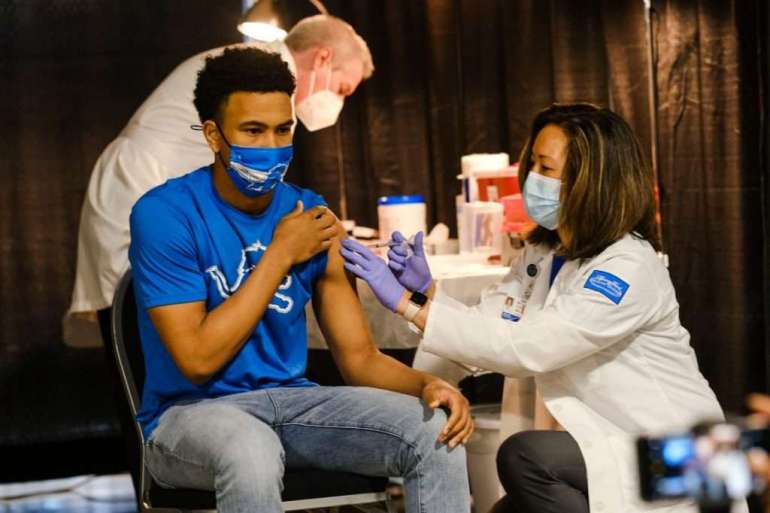Feds rethink vaccination strategy as slowing demand reveals stark divide

Demographics, the presence of Covid variants, mask use, social distancing and the weather can all contribute to how the virus spreads, which is why even some regions with very low vaccination rates aren’t seeing outbreaks. In Alabama, the infection rate is relatively stable, helped in part by warm temperatures that brought more people outside.
But vaccine demand has hit a wall in that state, leaving communities most resistant to the shots or those with the least access especially vulnerable.
Scott Harris, Alabama’s public health officer, said those states with higher poverty rates and less public health infrastructure are struggling to administer the vaccine. In his state, he’s been asking doctors in rural white communities to use their cell phones to make videos encouraging their patients to get vaccinated.
“For that particular demographic, they don’t trust government, they don’t trust public health, the media, politicians,” he said. “They do trust their own doctors.”
“We will be dealing with clusters of this disease going forward,” said Shereef Elnahal, CEO of University Hospital in Newark, N.J., and a former state health commissioner. “Right now, the most hesitant group is white conservatives and they may be the most at-risk going forward.”
The Biden administration is trying to narrow the gap by also working with primary care doctors and encouraging states and localities to establish walk-up sites, in an effort to make vaccinations as convenient as possible for the tens of millions who are not against getting a shot but just aren’t seeking one.
“We always anticipated that the higher our percentage of people getting vaccinated climbed, the harder it would get,” said the senior administration official working on the Covid response.
Inside the administration, there’s little expectation that the country will get back to the 4 million shots-per-day levels that officials celebrated earlier this year, outside of when eligibility is expanded to younger teens, as anticipated. But officials also insist there is no panic about the slowdown or the gaps. Nearly 40 percent of U.S. adults are fully vaccinated and millions more doses are administered every week.
“The raw number of people receiving shots is nearly the same who go to Dunkin’ Donuts every day,” the senior administration official said.
Still, some Biden surrogates and health experts have pressed the administration to be more explicit about how fast people will be able to return to their normal lives once they’re vaccinated, which could prove to be a crucial incentive for those who are simply less motivated, especially younger men. The CDC last week eased its mask guidance for vaccinated people after many public health experts complained the administration wasn’t moving fast enough.
“The default setting has to be more optimistic,” said Juliette Kayyem, an Obama-era homeland security official who is advising states on their Covid responses. “We have to have a ‘life is wonderful on the other side’ attitude.”
But White House officials also know that those moments aren’t yet available to everyone.
“We’re giving millions of shots per day so it’s not unexpected that there will be more of a balance between supply and demand,” Jeff Zients, the White House’s Covid-19 response coordinator, said during a briefing on Friday. “That makes it more important that we make it easier to get people vaccinated.”